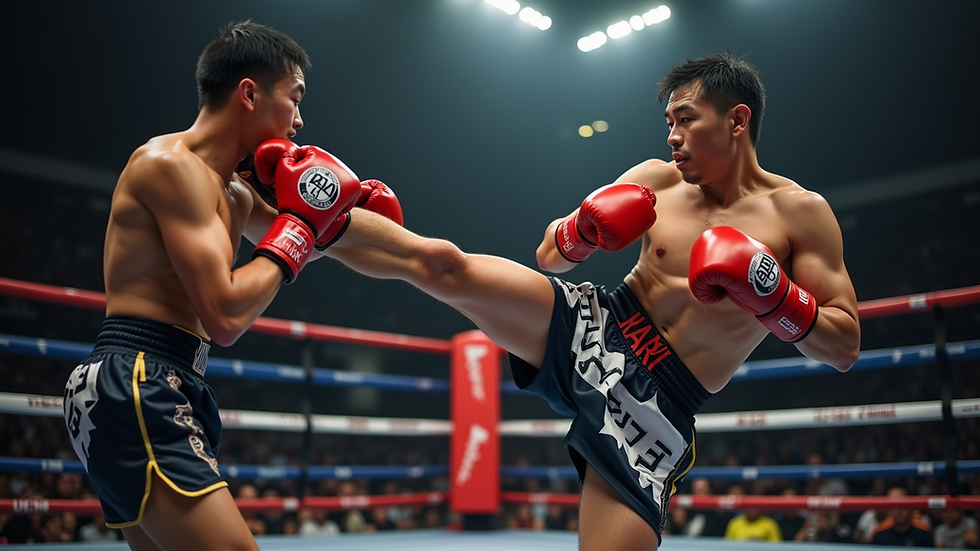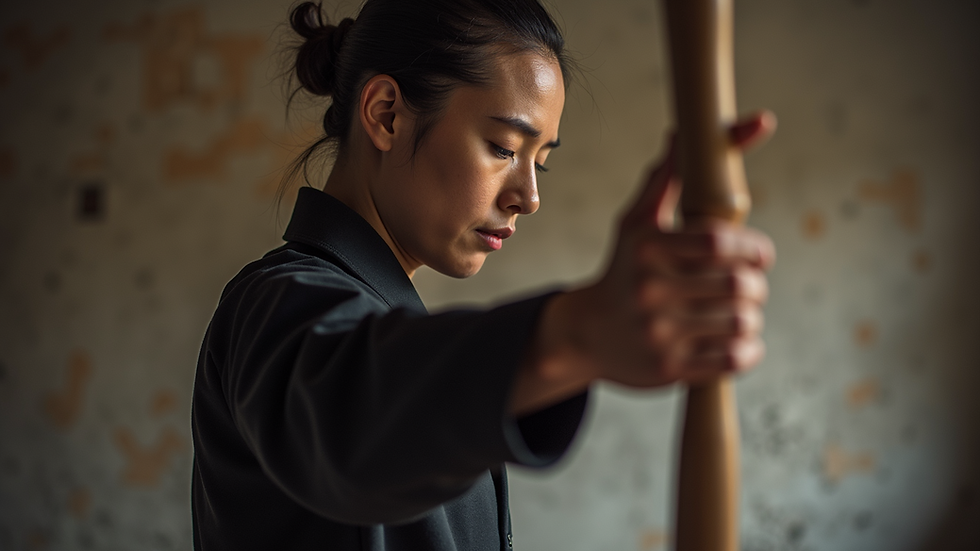Mastering Muay Thai Techniques: A Beginner's Guide
- cprakit
- Jul 23
- 5 min read
Muay Thai, often referred to as the "Art of Eight Limbs," is a striking martial art that uses punches, kicks, elbows, and knees. It is not just a sport; it is a way of life for many practitioners. If you are new to Muay Thai, you may feel overwhelmed by the techniques and training methods. However, with the right guidance and practice, you can master the basics and build a strong foundation. This guide will walk you through essential techniques, training tips, and the mindset needed to succeed in Muay Thai.
Understanding the Basics of Muay Thai
Before diving into techniques, it is crucial to understand the fundamentals of Muay Thai. This martial art originated in Thailand and has a rich history. It combines physical strength with mental discipline.
The Eight Limbs of Muay Thai
Muay Thai is unique because it utilizes eight points of contact. These are:
Fists: Used for punches.
Elbows: Effective for close-range strikes.
Knees: Powerful for clinch work and striking.
Feet: Used for kicks and footwork.
Understanding these eight limbs is essential for developing your skills. Each limb has its own techniques and applications.
Essential Techniques for Beginners
Now that you have a grasp of the basics, let’s explore some fundamental techniques that every beginner should learn.
1. The Stance
Your stance is the foundation of all your movements. A proper stance allows you to maintain balance and generate power.
Feet: Stand with your feet shoulder-width apart. Your lead foot should be slightly forward.
Knees: Keep your knees slightly bent to maintain mobility.
Hands: Raise your hands to protect your face, with your elbows close to your body.
Practice shifting your weight from one foot to the other while maintaining your stance. This will help you become more agile.
2. Basic Punches
Punching is a fundamental skill in Muay Thai. Here are the three basic punches you should master:
Jab: A quick, straight punch from your lead hand. It is used to gauge distance and set up other strikes.
Cross: A powerful straight punch from your rear hand. Rotate your hips and shoulders to generate power.
Hook: A punch that comes from the side. It targets the opponent's head or body.
Practice these punches on a heavy bag or with a partner. Focus on technique and accuracy.
3. Kicking Techniques
Kicking is a significant aspect of Muay Thai. Here are two essential kicks to learn:
Roundhouse Kick: This kick is delivered by swinging your leg in a circular motion. Aim to strike with your shin, not your foot.
Teep (Push Kick): A front kick used to keep opponents at bay. Extend your leg forward, pushing with the ball of your foot.
Practice these kicks slowly at first, then increase your speed and power as you become more comfortable.
4. Elbow Strikes
Elbow strikes are effective in close-range combat. Here are two common elbow techniques:
Horizontal Elbow: Swing your elbow horizontally to strike your opponent's head or body.
Diagonal Elbow: This strike comes from above and diagonally downwards. It is effective when your opponent is in a clinch.
Practice these strikes on pads or with a partner to develop accuracy and power.
5. Knee Strikes
Knee strikes are powerful and can be used in various situations. Here are two types of knee strikes:
Straight Knee: Drive your knee straight up towards your opponent's body.
Curved Knee: This knee strike comes from the side and is effective in clinch situations.
Incorporate knee strikes into your training routine to enhance your striking arsenal.
Training Tips for Beginners
Training is essential for mastering Muay Thai techniques. Here are some tips to help you get the most out of your training sessions.
1. Consistency is Key
Regular practice is crucial for improvement. Aim to train at least three times a week. Consistency will help you build muscle memory and improve your skills.
2. Focus on Technique
While it can be tempting to focus on power, technique should always come first. Proper form will help you strike effectively and reduce the risk of injury.
3. Work on Conditioning
Muay Thai requires a high level of fitness. Incorporate conditioning exercises into your routine, such as running, jumping rope, and strength training. This will improve your endurance and overall performance.
4. Sparring
Sparring is an essential part of training. It allows you to apply techniques in a controlled environment. Start with light sparring to build confidence and gradually increase intensity as you improve.
5. Listen to Your Body
Pay attention to how your body feels during training. If you experience pain or discomfort, take a break. Rest and recovery are vital for long-term success.
The Mental Aspect of Muay Thai
Muay Thai is not just about physical techniques; it also requires mental strength. Here are some ways to develop a strong mindset.
1. Set Goals
Setting clear, achievable goals will help you stay motivated. Whether it is mastering a specific technique or improving your fitness, having goals will give you direction.
2. Stay Positive
A positive attitude can make a significant difference in your training. Celebrate small victories and learn from setbacks.
3. Embrace the Challenge
Muay Thai can be tough, but embracing the challenge will help you grow. Push yourself out of your comfort zone and be open to learning.
4. Find a Supportive Community
Surround yourself with supportive training partners and coaches. A positive training environment will encourage you to push harder and stay committed.
Putting It All Together
As you embark on your Muay Thai journey, remember that mastering techniques takes time and dedication. Focus on the basics, practice regularly, and maintain a positive mindset.
Training Routine Example
To help you get started, here is a sample training routine for beginners:
Warm-Up (10 minutes): Jump rope or light jogging to get your heart rate up.
Technique Practice (30 minutes): Focus on punches, kicks, elbows, and knees. Work on combinations and footwork.
Conditioning (15 minutes): Perform bodyweight exercises such as push-ups, squats, and burpees.
Sparring (15 minutes): Light sparring with a partner to apply techniques.
Cool Down (10 minutes): Stretching to improve flexibility and prevent injury.
Final Thoughts
Mastering Muay Thai techniques is a rewarding journey that requires patience and perseverance. By focusing on the fundamentals, maintaining a consistent training routine, and developing a strong mindset, you will set yourself up for success.
Remember, every expert was once a beginner. Embrace the process, enjoy the training, and soon you will find yourself becoming more skilled and confident in the "Art of Eight Limbs."

As you continue your journey in Muay Thai, keep pushing your limits and striving for improvement. The skills you develop will not only enhance your fighting abilities but also contribute to your overall well-being. Enjoy the process, and happy training!


Comentarios